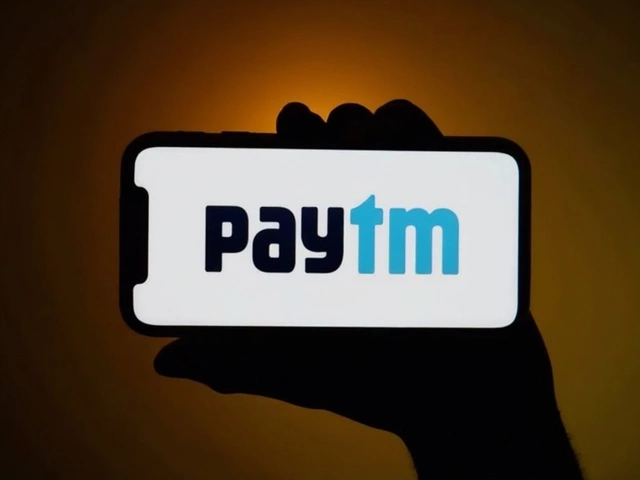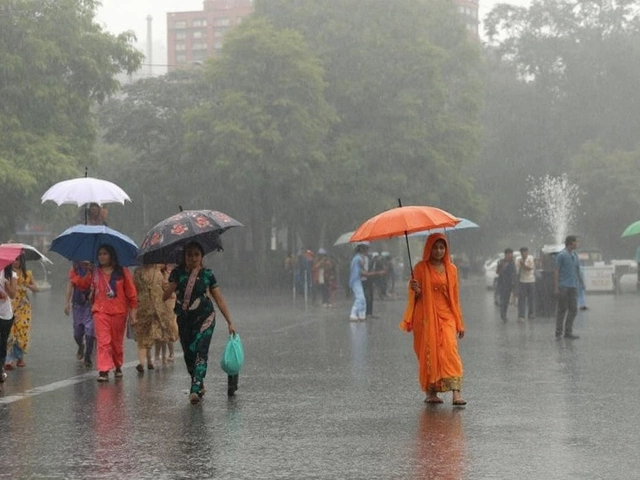Traffic Updates: What’s Happening on the Roads Right Now
Every time the skies open up in Delhi, the streets turn into a slow‑motion movie. Heavy showers aren’t just about getting wet—they instantly turn smooth lanes into bottlenecks. Recent IMD orange alerts have caused traffic snarls that last hours, and commuters are left wondering how to get home without the headache.
Take the rain on July 22‑23, for example. Flooded stretches in the capital and NCR forced drivers to pull over, and the traffic crawl stretched for several kilometers. The same pattern repeats whenever a western disturbance pushes extra moisture into the region. If you’re planning a trip across Delhi, expect delays and keep an eye on local alerts.
Rain‑Triggered Traffic: Why It Happens and What to Expect
When rain hits, two things happen at once: water reduces road grip, and visibility drops. Drivers instinctively slow down, and that ripple effect creates a chain reaction of stop‑and‑go traffic. Add in standing water that can trap low‑clearance vehicles, and you have a perfect storm for congestion.
The IMD’s orange alert for Delhi‑NCR on August 30 predicted an 87% chance of showers between 2 pm and 6 pm. That timeframe lines up with the peak commute, meaning traffic will be at its worst. The forecast also warned of thunderstorms, which can bring sudden flash floods that close minor roads and force traffic onto main arteries.
Beyond just rain, big events like the IPL opener between KKR and RCB can clash with weather alerts. The match at Eden Gardens faced a rain threat, and even though the probability was low, the possibility of a washout kept fans and commuters on edge. When sport, rain, and traffic converge, it’s a recipe for chaos.
Practical Tips to Dodge the Jam
First, check real‑time traffic maps before you leave. Apps that pull data from city sensors show which roads are clogged and suggest alternate routes. If a main highway shows a red line, switch to a side street that’s still clear.
Second, adjust your travel time. If you can shift your departure by 30 minutes, you might avoid the peak squeeze caused by rain‑related slowdowns. Even a small change can save you from sitting in water‑logged traffic.
Third, pack an emergency kit. A small umbrella, a raincoat, and a portable charger keep you comfortable if you’re stuck longer than expected. A bottle of water and a snack help you stay calm while traffic eases.
Lastly, consider public transport when the forecast calls for heavy rain. Buses and metro systems often have dedicated lanes or underground routes that bypass surface jams. A quick ride can be faster than battling a flooded road.
Keeping an eye on weather alerts, using live traffic tools, and planning a flexible schedule are the best ways to stay ahead of traffic snarls. Whether you’re heading to work, a cricket match, or just running errands, a little preparation can turn a rainy commute into a smooth ride. Stay safe, stay dry, and keep moving forward.
Kolkata rain: Depression drenches city, waterlogging and traffic snarls return with the monsoon
A weather depression over the Bay of Bengal has intensified monsoon showers in Kolkata, causing waterlogging in low-lying pockets and long traffic delays. The IMD expects intermittent heavy rain and gusty winds into early September. Civic teams ran pumps and cleared drains, but high tide and back-to-back showers slowed drainage. Commuters faced detours, slower public transport, and longer travel times.





